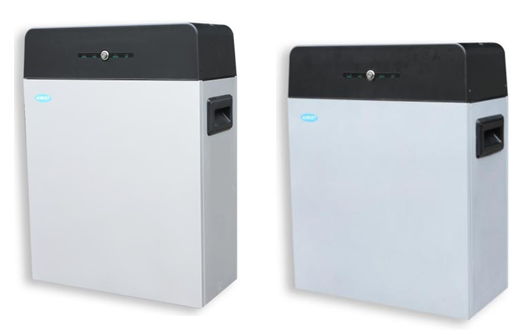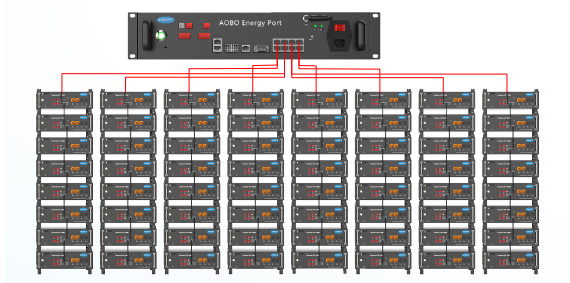Lithium-ion batteries are an important battery technology widely used in mobile devices, electric vehicles and renewable energy storage. It is favored for its high energy density, long lifetime, and environmental friendliness. This article will introduce the working principle, structure and application of lithium batteries, and discuss their future development trends.

A lithium battery is a device that stores and releases energy by the migration of lithium ions between positive and negative electrodes. It consists of positive electrode, negative electrode, electrolyte and separator. The positive electrode is usually made of lithium-containing compounds such as lithium cobaltate, lithium ferric acid, and lithium manganese acid, and the negative electrode is usually made of materials such as graphite or lithium titanate. Electrolyte is a kind of conductive solution, commonly used is lithium salt dissolved in organic solvent. The separator is used to prevent direct contact between positive and negative electrodes, but at the same time allows the transmission of ions.
During the charge and discharge process of a lithium battery, lithium ions migrate between the positive and negative electrodes. When charging, an external power supply applies a voltage to make lithium ions deintercalate from the positive electrode, pass through the electrolyte and separator, and insert into the structure of the negative electrode material. This process is reversible, so lithium batteries can be charged and discharged many times. During discharge, lithium ions are deintercalated from the negative electrode, pass through the electrolyte and separator, and are embedded in the structure of the positive electrode material.

Lithium batteries have many advantages. First, they have a high energy density, meaning they can store more energy, allowing devices to work longer. Second, lithium batteries have a long lifespan, allowing hundreds to thousands of charge and discharge cycles without significant loss of performance. In addition, lithium batteries have no memory effect, so they can be charged at any time without waiting for a full discharge. Most importantly, lithium batteries are relatively environmentally friendly because they do not contain heavy metals such as cadmium and mercury, and can be recycled.
Lithium batteries are widely used in many fields. In the field of mobile devices, such as smartphones and tablet computers, lithium batteries are lightweight and can provide long-lasting power support for devices. In the electric vehicle industry, lithium batteries are the main.

Lithium batteries are an important and widely used battery technology with many advantages and disadvantages.
The advantages of lithium batteries are as follows:
- High energy density: Lithium batteries have a high energy density, meaning they can store more energy. This makes lithium batteries ideal for mobile devices such as smartphones and tablets, as they can provide longer periods of use.
- Long cycle life: Compared with other types of batteries, lithium batteries have a longer cycle life. They can undergo hundreds to thousands of charge and discharge cycles without significant loss of performance. This makes lithium batteries very popular in applications that require long-term use and frequent charging and discharging, such as electric vehicles and renewable energy storage systems.
- No memory effect: Lithium batteries have no memory effect, which means they can be charged at any time without waiting for a full discharge. This makes lithium batteries very convenient to use, and users can flexibly charge them as needed without worrying about the impact on battery life.
- Environmentally friendly: Lithium batteries are relatively environmentally friendly. Compared with traditional nickel-cadmium batteries, lithium batteries do not contain heavy metals, such as cadmium and mercury, which are harmful to the environment. In addition, lithium batteries can be recycled, reducing the impact of waste batteries on the environment.

Although lithium batteries have many advantages, there are also some disadvantages:
- Safety issues: Lithium batteries generate heat during charging and discharging. If not used or manufactured properly, it may cause overheating, short circuit, or even fire and explosion. In the past few years, some lithium battery accidents have raised safety concerns, and measures need to be taken to improve the safety of lithium batteries.
- Higher cost: Compared with other types of batteries, the cost of lithium batteries is higher. This is mainly due to the limitation of production process and material cost. However, with the advancement of technology and the realization of economies of scale, the cost of lithium batteries is gradually decreasing.
- Limited resources: Lithium is the key raw material of lithium batteries, and its resources are limited. With the demand for lithium batteries
Lithium battery is an important technology in the field of energy storage and electrification in the future, and its application prospect is broad. The following are the future application areas of lithium batteries:
Electric Vehicles: The market for electric vehicles is growing rapidly as the demand for environmentally friendly and sustainable mobility increases. Lithium batteries have become the preferred energy storage technology for electric vehicles due to their advantages such as high energy density and long cycle life. In the future, with the popularization of electric vehicles, the demand for lithium batteries will increase significantly.
Renewable Energy Storage: The instability of renewable energy sources such as solar and wind makes energy storage critical. Lithium batteries can store electricity generated from renewable sources and release it when needed. This provides a smooth power supply for the energy system, reduces dependence on traditional energy sources, and promotes the large-scale application of renewable energy.
Mobile devices: With the widespread use of smartphones, tablets and portable electronic devices, the demand for high-performance batteries is also increasing. With its high energy density and light weight, lithium batteries provide long-term power support for mobile devices. In the future, as the functions of mobile devices continue to increase, the demand for lithium batteries will continue to increase.
Home Energy Storage: The demand for home energy storage systems is increasing, especially in the context of smart grids and distributed energy systems. Lithium batteries can store electricity during off-peak hours and release it during peak hours to reduce household power demand peaks, improve energy efficiency, and reduce energy costs.
Industrial application: Lithium batteries also have a wide range of application potential in the industrial field. For example, areas such as drones, robotics, and power tools require battery support with high energy density and reliability. Lithium batteries can provide long-lasting power supply and meet the performance and reliability requirements of industrial applications.
With the continuous advancement of science and technology and the increasing demand for sustainable energy, lithium batteries will continue to be improved and innovated. Future development trends include increasing energy density, reducing cost, enhancing safety, and extending cycle life. These innovations will further promote the application of lithium batteries in various fields and promote.






